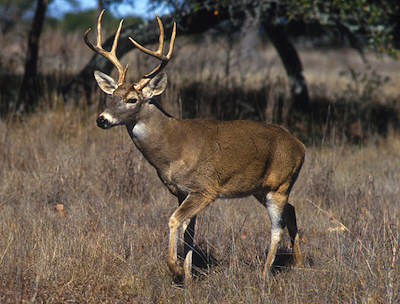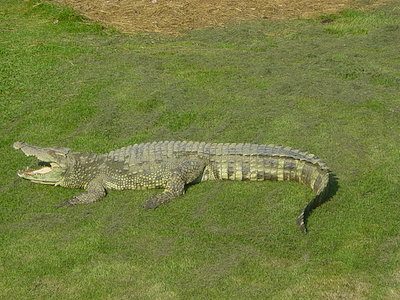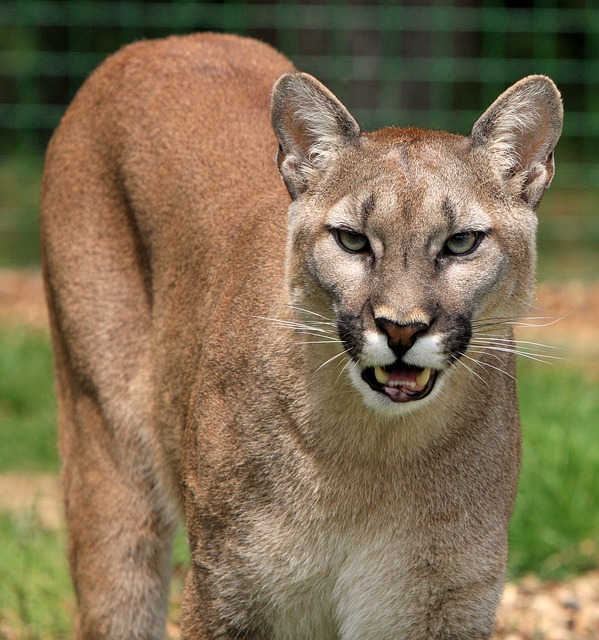Finding Food
The first thing on an animal’s "To-do" list is survive. Surviving has a few steps: eating, finding shelter, and avoiding predators. Eating food is an essential part of life. All animals are heterotrophs, meaning they don’t make their own food and have to acquire it somewhere. For most animals, this means they have to forage.
Foraging is the process of looking for and obtaining food—but where to start? Some animals start things off right by being born near their primary food source. Monarch butterflies lay their eggs on milkweed plants so the caterpillars can start eating their favorite (and only) food as soon as they are born. Don't caterpillars have considerate parents?
Animals that are not lucky enough to be born on a food source have to search for their food. Once they know what kind of food they like, animals try to minimize the amount of time they spend traveling to and searching for food in favor of gaining the most calories.
Say you are in a city you have never been to brefore and you are going out for dinner. You can see on a map that there are ten restaurants on one street and only one restaurant on the other streets. Which street are you going to go to? Probably the street with ten restaurants, because you will be able to find food you like more quickly than wandering from street to street with only one restaurant per street. The idea behind this is called optimal foraging theory, which is a theory that animal foraging behavior minimizes the risks and maximizes the benefits.
Many researchers have studied the foraging behavior of animals and collected evidence in favor of optimal foraging theory. For example, crows on beaches in British Columbia dig up clams on the beach. Even though they dig up lots of clams, they don’t actually open and eat all the clams . Why would they go to the trouble of digging the clam up if they are not going to eat it?

Littleneck clams. Image from here.
The scientists studying these crows hypothesized the crows do not bother opening up smaller clams because they will not get much energy out of them, and they prefer to focus on the larger clams that will give them more food. They figured that the handling time—the amount of time it takes them to open a clam—might be better spent searching for a bigger clam, which provides more food. If the gain of eating the small clam is less than the gain of eating a big clam even after searching and handling time is taken into account, then the crow abandons the small clam in favor of finding a bigger clam. Scientists studying these crows predicted the size of clams that would be eaten and found that crows ate almost all the clams above a certain size (31 mm) but few of the clams smaller than that . Chowder time, anyone?
Another thing to take into account are predators. Most prey animals try to avoid predators at all costs. If a deer has two potential food sources and one is in the middle of wolves' territory, it will choose the source where it is not likely to be attacked by wolves. The risk of choosing the food near wolves is too high. Scientists have observed that if deer have equal amounts of food in open fields or in forested areas, they prefer to spend time foraging in the open field, which offers better views of predators (and fewer hiding places for the predators).

This white-tailed deer is foraging in an area without dense tree cover. Image from here.
Speaking of predators—they have to eat too. Unfortunately for them, Outback Steakhouse does not allow snakes, crocodiles, and sharks as customers, so they have to hunt. Hunting involves some specific behaviors that are different than browsing for food growing on trees.
One of the keys to successful hunting is the element of surprise. If you are a crocodile with a taste for shorebird, you better sneak up on the bird before it can fly away. Last time we checked, crocodiles can’t fly (Perhaps you recall this book from your childhood). Crocodiles and other predators that sneak up on their prey are called ambush predators or sit-and-wait predators. These guys are the Zen masters of the animal world, patiently waiting until the moment is right to pounce. Maybe ripping helpless animals to shreds isn’t so Zen, but they are very patient.
Ambush predators are fast, but they do not have a lot of endurance. They won’t be chasing gazelles or running marathons any time soon. Snakes and crocodiles rely on ambushing their prey to catch it. Since both are cold-blooded creatures, they do not have the energy to prowl around for long periods searching for tasty morsels. Instead, they opt for sitting it out and letting a delicious unsuspecting animal waltz right by them.

Image from here.
Of course, there is a bit of homework they do beforehand. If a crocodile sees a lot of birds fishing in a river, it will return to that spot because it is likely to catch something there. Similarly, snakes patrol areas that are likely to have prey in them, such as bird nesting sites or sunny spots where lizards bask.
Ambush predators are usually camouflaged, which means they have coloration that allows them to blend in with the environment. Both predators and prey can have camouflage. Crocodiles submerge themselves in water remaining motionless with just their eyes sticking out, so they look like a sunken log or tree trunk. This is especially effective at night. Then, they leap out of the water, grab the closest animal, and snap their strong jaws shut. Yikes.
Another way of hunting is stalking. Bears and mountain lions are stalkers-extraordinaire. Watch out next time you go camping. Stalking predators need power and stealth. Stalking prey involves quietly getting close to them and waiting for the right moment to make the kill when the prey is close enough. Mountain lions can leap 30 feet, so "close enough" is actually pretty far.

Image from here.
Polar bears hunt seals by stalking them while they are sleeping on the ice. The polar bear sneaks forward, slowly and quietly. If the seal wakes up and looks around, the polar bear becomes motionless, blending into the white Arctic background. Then the seal goes back to sleep, and the polar bear moves in. It jumps on the seal from 20 feet away, and quickly kills it before the seal can slide back into the water and swim away.
Sharks are also equipped to be excellent predators. They have excellent senses of smell and hearing and they can detect prey by sensing vibrations in the water. Sharks have lines of nerves running down their bodies called lateral lines, which tell the shark if something is moving nearby. Lateral lines also help sharks find prey by detecting where odors are coming from. They allow the shark to follow the scent trail traveling through the water and locate its source.

Great white shark. It can smell you coming. Image from here.
Some animals hunt in groups, like chimpanzees, lions and wolves. This allows the predators to take on prey that would be too difficult to capture for just one animal. Groups of lions sometimes kill elephants, but an individual lion would have to be nuts, or just very very hungry, to try to take down an elephant on its own.
Foraging is the process of looking for and obtaining food—but where to start? Some animals start things off right by being born near their primary food source. Monarch butterflies lay their eggs on milkweed plants so the caterpillars can start eating their favorite (and only) food as soon as they are born. Don't caterpillars have considerate parents?
Animals that are not lucky enough to be born on a food source have to search for their food. Once they know what kind of food they like, animals try to minimize the amount of time they spend traveling to and searching for food in favor of gaining the most calories.
Say you are in a city you have never been to brefore and you are going out for dinner. You can see on a map that there are ten restaurants on one street and only one restaurant on the other streets. Which street are you going to go to? Probably the street with ten restaurants, because you will be able to find food you like more quickly than wandering from street to street with only one restaurant per street. The idea behind this is called optimal foraging theory, which is a theory that animal foraging behavior minimizes the risks and maximizes the benefits.
Many researchers have studied the foraging behavior of animals and collected evidence in favor of optimal foraging theory. For example, crows on beaches in British Columbia dig up clams on the beach. Even though they dig up lots of clams, they don’t actually open and eat all the clams . Why would they go to the trouble of digging the clam up if they are not going to eat it?

Littleneck clams. Image from here.
The scientists studying these crows hypothesized the crows do not bother opening up smaller clams because they will not get much energy out of them, and they prefer to focus on the larger clams that will give them more food. They figured that the handling time—the amount of time it takes them to open a clam—might be better spent searching for a bigger clam, which provides more food. If the gain of eating the small clam is less than the gain of eating a big clam even after searching and handling time is taken into account, then the crow abandons the small clam in favor of finding a bigger clam. Scientists studying these crows predicted the size of clams that would be eaten and found that crows ate almost all the clams above a certain size (31 mm) but few of the clams smaller than that . Chowder time, anyone?
Another thing to take into account are predators. Most prey animals try to avoid predators at all costs. If a deer has two potential food sources and one is in the middle of wolves' territory, it will choose the source where it is not likely to be attacked by wolves. The risk of choosing the food near wolves is too high. Scientists have observed that if deer have equal amounts of food in open fields or in forested areas, they prefer to spend time foraging in the open field, which offers better views of predators (and fewer hiding places for the predators).

This white-tailed deer is foraging in an area without dense tree cover. Image from here.
Speaking of predators—they have to eat too. Unfortunately for them, Outback Steakhouse does not allow snakes, crocodiles, and sharks as customers, so they have to hunt. Hunting involves some specific behaviors that are different than browsing for food growing on trees.
One of the keys to successful hunting is the element of surprise. If you are a crocodile with a taste for shorebird, you better sneak up on the bird before it can fly away. Last time we checked, crocodiles can’t fly (Perhaps you recall this book from your childhood). Crocodiles and other predators that sneak up on their prey are called ambush predators or sit-and-wait predators. These guys are the Zen masters of the animal world, patiently waiting until the moment is right to pounce. Maybe ripping helpless animals to shreds isn’t so Zen, but they are very patient.
Ambush predators are fast, but they do not have a lot of endurance. They won’t be chasing gazelles or running marathons any time soon. Snakes and crocodiles rely on ambushing their prey to catch it. Since both are cold-blooded creatures, they do not have the energy to prowl around for long periods searching for tasty morsels. Instead, they opt for sitting it out and letting a delicious unsuspecting animal waltz right by them.

Image from here.
Of course, there is a bit of homework they do beforehand. If a crocodile sees a lot of birds fishing in a river, it will return to that spot because it is likely to catch something there. Similarly, snakes patrol areas that are likely to have prey in them, such as bird nesting sites or sunny spots where lizards bask.
Ambush predators are usually camouflaged, which means they have coloration that allows them to blend in with the environment. Both predators and prey can have camouflage. Crocodiles submerge themselves in water remaining motionless with just their eyes sticking out, so they look like a sunken log or tree trunk. This is especially effective at night. Then, they leap out of the water, grab the closest animal, and snap their strong jaws shut. Yikes.
Another way of hunting is stalking. Bears and mountain lions are stalkers-extraordinaire. Watch out next time you go camping. Stalking predators need power and stealth. Stalking prey involves quietly getting close to them and waiting for the right moment to make the kill when the prey is close enough. Mountain lions can leap 30 feet, so "close enough" is actually pretty far.

Image from here.
Polar bears hunt seals by stalking them while they are sleeping on the ice. The polar bear sneaks forward, slowly and quietly. If the seal wakes up and looks around, the polar bear becomes motionless, blending into the white Arctic background. Then the seal goes back to sleep, and the polar bear moves in. It jumps on the seal from 20 feet away, and quickly kills it before the seal can slide back into the water and swim away.
Sharks are also equipped to be excellent predators. They have excellent senses of smell and hearing and they can detect prey by sensing vibrations in the water. Sharks have lines of nerves running down their bodies called lateral lines, which tell the shark if something is moving nearby. Lateral lines also help sharks find prey by detecting where odors are coming from. They allow the shark to follow the scent trail traveling through the water and locate its source.

Great white shark. It can smell you coming. Image from here.
Some animals hunt in groups, like chimpanzees, lions and wolves. This allows the predators to take on prey that would be too difficult to capture for just one animal. Groups of lions sometimes kill elephants, but an individual lion would have to be nuts, or just very very hungry, to try to take down an elephant on its own.